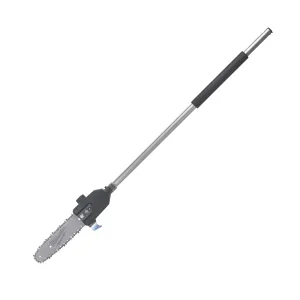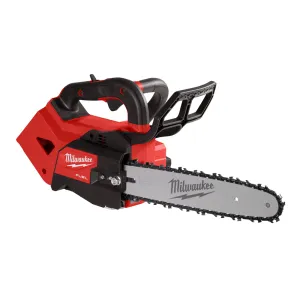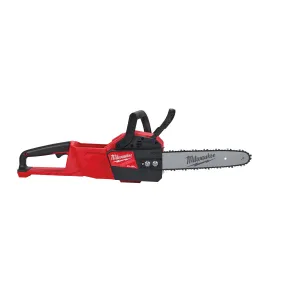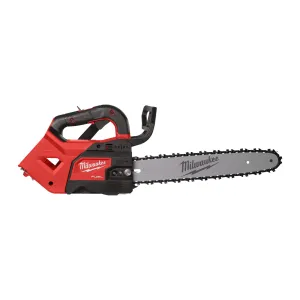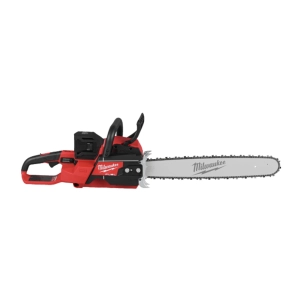Felling trees requires a certain level of knowledge, experience and training. For that reason, this guide only focusses on using a chainsaw to cut already felled branches and trunks if they are supported and on or close to the ground. Please consult a professional arborist for advice relating to felling a whole tree or removing large branches.
Before you start cutting:
• If using a new chainsaw for the first time, please familiarise yourself with the manufacturer’s instructions for your model.
• Never start a cutting project using a chainsaw if you have any doubt in your ability to handle it. It is always best to consult a professional arborist if unsure.
• Ensure the chainsaw is correctly fuelled or charged and that it has been well-maintained, cleaned and oiled according to the manufacturer’s instructions.
• Make sure you are wearing the correct PPE. It is vital that you wear protective clothing before using a chainsaw.
• Ensure you are confident in your footing, and that you are holding the chainsaw firmly with both hands, bearing the weight with ease.
• Always start a chainsaw before it comes into contact with the wood – never when it is already in contact with wood.
• Take care to distance yourself and your cutting activity from any other people, animals, vehicles, power lines, buildings or other property.
• Be aware of where the wood you are cutting will fall or roll once cut. Could it injure anyone? Have you left enough space around you for the scope of your project?
• Take care to remove any wires, wrappings, stones or loose bark (that might fly off) from the log and cutting area before starting.
• Ensure you have good visibility of the log or trunk you are cutting and that this isn’t obscured in anyway by a dirty face shield or safety glasses.
Now you’re ready to begin cutting. Cutting into tree trunks and logs is also known as bucking. Overbucking refers to cutting from the top of a supported horizontal trunk/branch, and conversely, underbucking refers to the process of cutting the log from the underside.
Overbucking or overcutting
Overbucking is the simplest and safest way to cut into a trunk or log that is already horizontal and supported its entire length by the ground.
Before you start any cutting, make sure you know what might happen to the log or trunk once it is cut. Which direction will it fall? Will it damage anything it will fall onto? Can it roll away?
Once you are reassured that you are safely set up, start at the top of the log applying light pressure with your chainsaw. The chainsaw needs to do most of the work, so do not push it too hard into the log – it does not need force to work effectively.
If you feel you are having to apply force to make an effective cut, your chain may not be sharp enough. Stop the project and sharpen the chain according to the manufacturer’s instructions before continuing.
Make sure you do not tilt the chainsaw so far that it comes into contact with the ground as this can be dangerous and can damage the chainsaw. Try and keep your chainsaw parallel with the ground.
If the chainsaw bar gets caught or stuck in the log or trunk, do not force it out. Turn it off and drive a wedge into the cut to open the log enough to remove your chainsaw. Never try to restart your chainsaw when it is already in contact with wood.
If you are cutting into a log that is only supported either end (i.e. by two sawhorses), overbuck one third of the log only and then complete the cut by underbucking.
Underbucking or undercutting
Underbucking requires a little more control on your part as the chainsaw will want to push back. Make sure you are holding it firmly.
This technique can only be used if the log is supported and suspended – in other words in a position where you can position the chainsaw underneath the log.
Keep the chainsaw parallel with the ground and apply gentle upwards pressure as you start to cut. The chainsaw will do the hard work once the teeth have engaged with the wood.
Be ready for when you near the end of your cut - or complete the cut-through - by releasing pressure a little, without relaxing your grip of the chainsaw.
Remember, never let the chainsaw touch the ground when it is operating, and always wait for the chainsaw to stop completely before putting it down.




